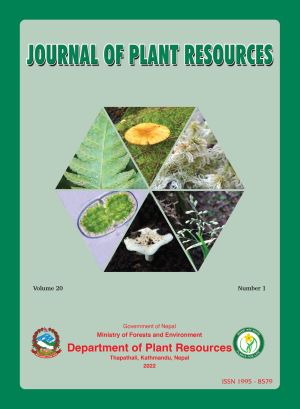Grass Flora along Altitudinal Gradient of the Phulchoki Hill, Central Nepal
DOI:
https://doi.org/10.3126/bdpr.v20i01.56579Keywords:
Altitude, Habitat, Species richnessAbstract
Phulchoki hill on the southern part of Kathmandu Valley (1550-2750 m) presents a unique opportunity to study the diversity of grasses along the altitudinal gradient. During the present study, 73 species of grasses belonging to 5 sub families, 16 tribes and 48 genera were recorded, out of which 28 species are new to this area. Among the recorded species 89% of the species were terrestrial, 7% lithophytes and remaining 4% aquatic. The lowest elevation (1550-1950 m) has highest diversity with 49 species whereas the topmost band (2351-2750 m) has least diversity with only 19 species. The total species richness of grass has decreasing trend along the altitudinal gradient of species, with r2 =0.97 and p=0.04, which indicates significant relation.




